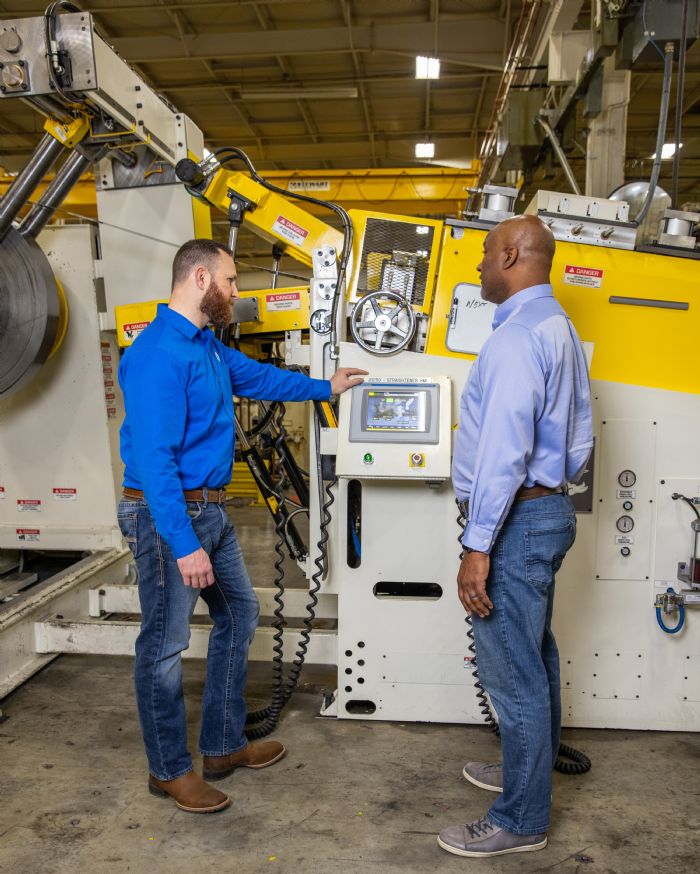 “When we look at justifying new equipment,” Davenport continues, “we look not only at the work we have today but the work we want to take on down the road. I don’t want to buy equipment today that won’t fit what we want to do tomorrow. One reason that we added the robust feed line was to increase our capabilities from a material standpoint—now we can run ¼-in.-thick material to 18 in. wide, allowing us to produce heavier brackets on the servo press rather than run them on our 400- or 600-ton presses.”
“When we look at justifying new equipment,” Davenport continues, “we look not only at the work we have today but the work we want to take on down the road. I don’t want to buy equipment today that won’t fit what we want to do tomorrow. One reason that we added the robust feed line was to increase our capabilities from a material standpoint—now we can run ¼-in.-thick material to 18 in. wide, allowing us to produce heavier brackets on the servo press rather than run them on our 400- or 600-ton presses.”
“Some of those brackets,” says Bischoff, “have 12 or 13 countersunk holes and generate a lot of tonnage in the press. We can run them on the new press line at a higher stroke rate than we used to, and with less tool damage.”
Bridging the Gap Between “Green” and Skilled Operators
The restructuring plan at Jireh kicked off in mid-2018 with the installation of the press and feed line. To begin the transfer of work from the Holland facility with minimal to no disruption in servicing customers, the firm started by moving smaller stamping tools, running on a 75-ton press, over to the Grandville plant. Then it started moving tools from the two 400-ton presses over, idling one of the mechanical presses in August 2019 and the second in July 2020. After transferring the work and moving a pair of 200-ton presses during the transition, Jireh now runs 15 presses ranging from 80 to 600 tons, all in one facility.
“Operating now over two shifts,” says Davenport, “we have more capacity from one facility than we had from two. We’re using our team members more efficiently, and we no longer have to compete for skilled workers in the tight Holland labor market.”
Make no mistake, however—Davenport and his management team feel the effects of the skilled-labor shortage, one factor in its decision to equip the new Coe coil line with all of the bells and whistles designed to optimize operator efficiency and effectiveness. First and foremost, says Bischoff: Coe’s Work Roll Advisor software that runs on the PLC machine control is a game changer. To set up a new job, he explains, the press operator enters the material specifications (type, thickness, width and yield strength) into the HMI and the software calculates the correct straightener-roll depth and then saves the setting in a job recipe. In addition, a Work Roll Compensation feature monitors the coil OD during production and adjusts the straightener to compensate for changes in the amount of coil set in the material as the coil depletes.
“One of our goals,” says Davenport, “has been to introduce new technology and automation to help assist our team members, to make them more effective in a short period of time. That’s critical for us—we can get new employees up to speed more quickly by using this type of technology so that they can be effective right out of the gate. It bridges the gap from starting as a ‘green’ operator to becoming a skilled operator.”
Preaching Best Practices
In the interest of developing skilled, knowledgeable operators, Bischoff explains that when Jireh installed the new line, “Coe came in and conducted an extensive training session with our team. They worked with our operators and setup people, and our tooling and engineering staff as well—35 people learned best practices for processing coils safely and efficiently. They also gained more in-depth knowledge about coil set, why it happens and how to deal with it.”
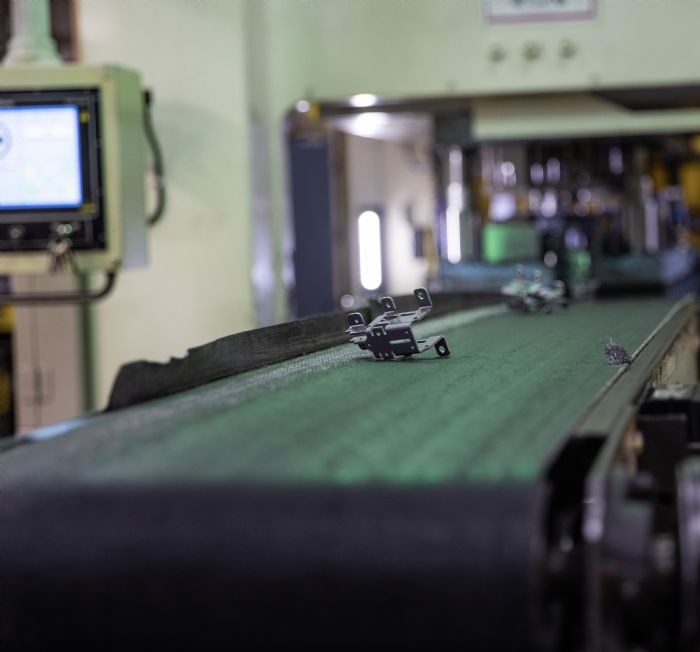 Another coil-line feature getting the nod from Bischoff and the Jireh production team: line-speed averaging. “The feed-line control synchronizes everything with the servo press to ensure that the material feeds smoothly,” Bischoff says. “Coil payoff is consistent, and the straightener synchronizes perfectly with the feeder. It’s all very smooth, minimizing wear and tear on the equipment.”
Another coil-line feature getting the nod from Bischoff and the Jireh production team: line-speed averaging. “The feed-line control synchronizes everything with the servo press to ensure that the material feeds smoothly,” Bischoff says. “Coil payoff is consistent, and the straightener synchronizes perfectly with the feeder. It’s all very smooth, minimizing wear and tear on the equipment.”
The value of this feature becomes clear when running a critical security-hardware part that proved challenging to form on a conventional press.
“Producing this part on one of the older mechanical presses resulted in a high scrap rate,” Bischoff notes. “On the new press we can use the restrike program in Aida’s servo control and maintain synchronization with the feed line. The part now runs without any issue, and because we can run in pendulum mode our net parts-per-minute hasn’t changed.”
Coil-line specifics: 36-in. servo roll feed; 36 by 12-in. threading table; 3 by 36-in. straightener with 6-in. pinch rolls; and 20,000-lb. by 36-in. coil reel. It can feed 45,000-psi-yield-strength material to ¼ in. thick at 18 in. wide, and 0.187-in.-thick sheet to 36 in. wide.
Faster Line Changeover
Like most metal formers, Jireh has seen the need to run lower volumes and a higher mix of products, as the move to mass customization has hit the office-furniture market as it has other markets. In that light, the automated features of the coil line add even more value. In particular, moving 12-in.-wide coils of ¼-in.-thick steel can be quite cumbersome for operators, not to mention a safety concern.
“Here, the setup automation contributes to quicker coil changes, by at least 5 min. per change, as well as helps to keep our operators safe,” Bischoff says. “And, because some of our parts are quite large, we can run through coils quickly. We’re changing dies on this press every 3 to 6 hr., and during that time we might run through as many as four coils. Even more reason to ensure efficient—and safe—coil changes.” MF
View Glossary of Metalforming Terms
See also: Coe Press Equipment Corporation
Technologies: Coil and Sheet Handling, Stamping Presses
Comments
Must be logged in to post a comment. Sign in or Create an Account
There are no comments posted.Andritz to Supply Cut-to-Length Line to Olympic Steel in Min...
February 11, 2025







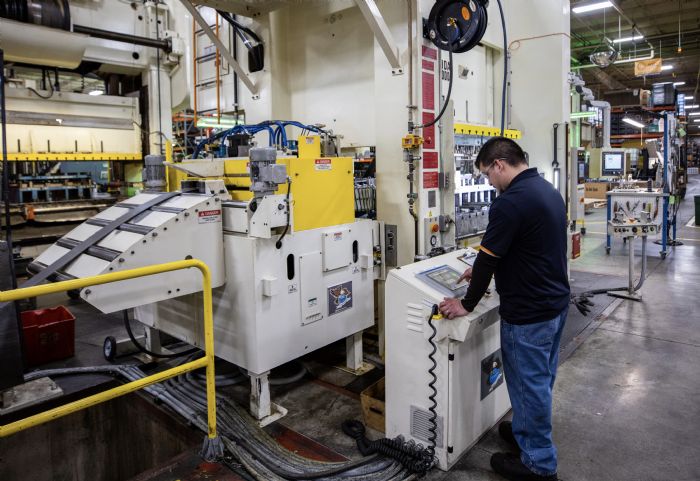 To make it happen, Davenport and team decided to invest in a new higher-productivity press line for the Grandville facility, anchored by a 330-ton servo press and a new fully equipped and robust Coe feed line with state-of-the-art controls. The new press line now handles a majority of the tools that ran on a pair of 400-ton mechanical presses brought over from the Holland plant. In addition, the press and its accompanying feed line also now take on high-strength steel work that used to hit at close to 400 tons on the mechanical presses.
To make it happen, Davenport and team decided to invest in a new higher-productivity press line for the Grandville facility, anchored by a 330-ton servo press and a new fully equipped and robust Coe feed line with state-of-the-art controls. The new press line now handles a majority of the tools that ran on a pair of 400-ton mechanical presses brought over from the Holland plant. In addition, the press and its accompanying feed line also now take on high-strength steel work that used to hit at close to 400 tons on the mechanical presses. 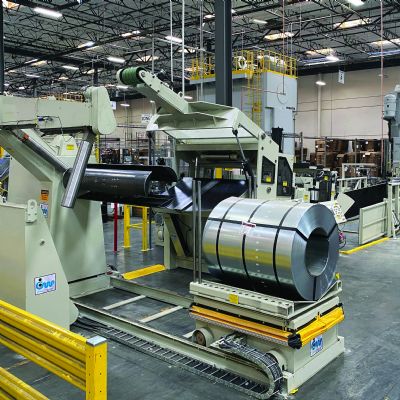
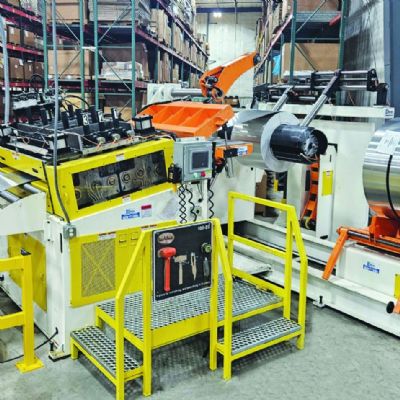
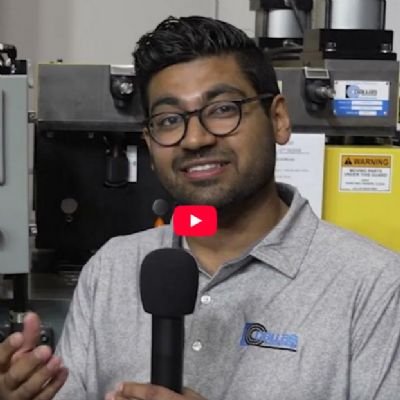
 Video
Video